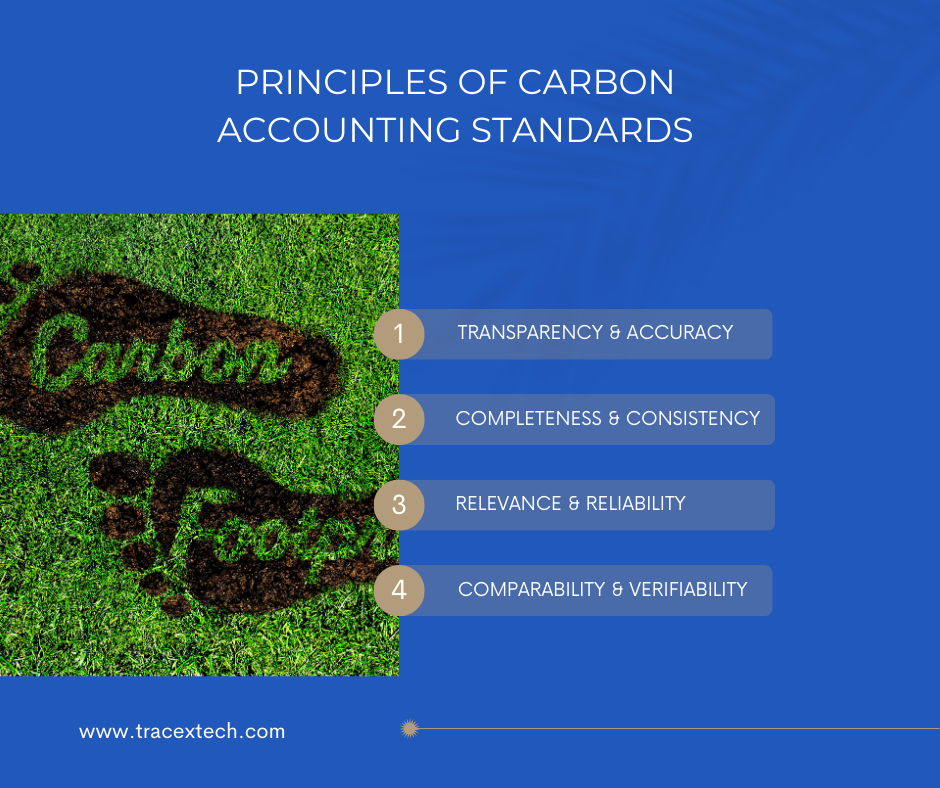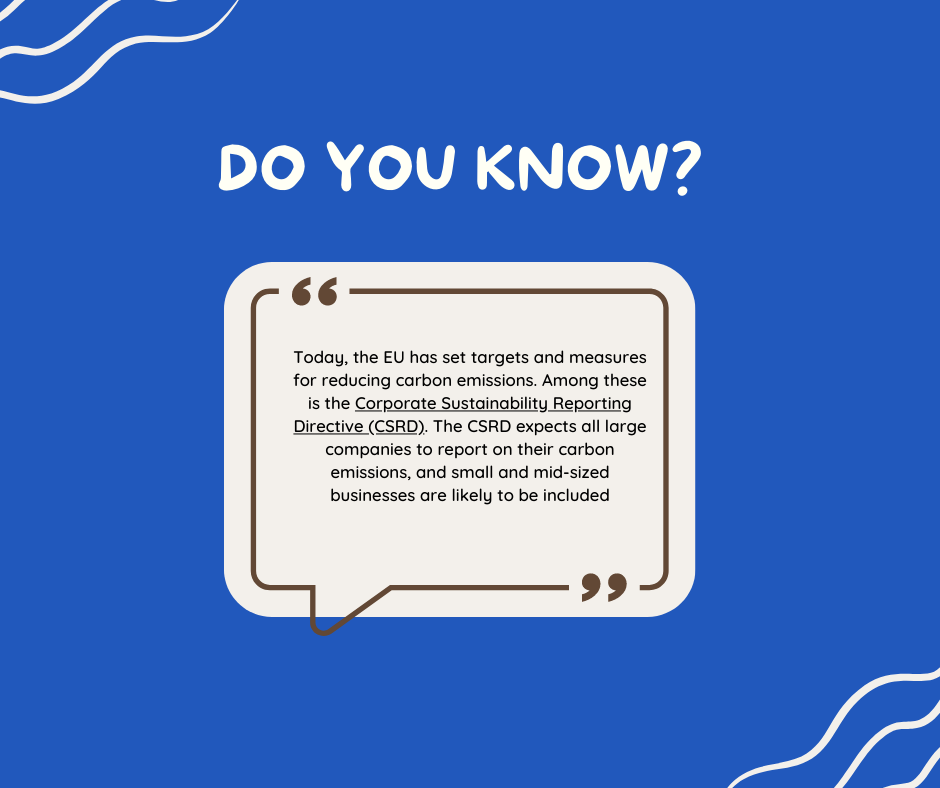Contact: +91 99725 24322 |
Menu
Menu
Quick summary: Explore the world of carbon accounting standards and frameworks. Discover how ISO 14064, The Greenhouse Gas Protocol, and Science-Based Targets Initiative are shaping sustainable accountability. Learn about their similarities, differences, and their role in measuring, reporting, and managing carbon footprints.

Sed environmental data with a focus on business emissions to the CDP.
It’s a relatively new concept that is gaining importance in the business world as companies are pressured to reduce their carbon footprint and contribute to the fight against climate change. In this article, we’ll explore what carbon accounting is, how it relates to ESG reporting, and why it matters for businesses and investors, the standards and frameworks, the components of carbon accounting and the need for consistent measuring and reporting.
The origins of carbon accounting can be traced back to the 1990s when environmental concerns started to gain traction globally. In 1997, the Kyoto Protocol was signed, which required participating countries to reduce their GHG emissions to combat climate change. This led to the development of international standards for carbon accounting, such as the Greenhouse Gas Protocol (GHGP) created in 2001 by the World Resources Institute (WRI) and the World Business Council for Sustainable Development (WBCSD).
Carbon accounting can provide s Carbon accounting is the process of measuring, reporting, and verifying an organization’s greenhouse gas emissions (GHG) and carbon footprint. It’s a way for businesses to understand and track their impact on the environment and identify areas where they can reduce their emissions. Carbon accounting can be done internally by a company or externally by a third-party auditor. The resulting data is then used to create a carbon inventory and assess the effectiveness of emission reduction strategies.
In 2022, 81% of S&P 500 companies reported their Scope 1 and Scope 2 emissions and over 22,000 companies disclo everal benefits to businesses, such as identifying opportunities to reduce costs and increase efficiency, improving the company’s reputation and brand image, and complying with regulatory requirements. By tracking their carbon footprint and setting reduction targets, companies can also contribute to the global effort to combat climate change.
ESG (Environmental, Social, and Governance) reporting refers to the practice of disclosing a company’s non-financial performance, including its impact on the environment, society, and corporate governance. Carbon accounting is one component of ESG reporting, specifically related to the environmental aspect. By including carbon accounting in their ESG reporting, companies can demonstrate their commitment to sustainability and provide investors with a clearer picture of their impact on the environment.
Understanding and adhering to key carbon accounting standards is important for organizations seeking to accurately measure and manage their carbon footprint. These standards provide essential guidelines allowing businesses to effectively contribute to emission reduction goals, transparency and sustainable practices. Properly defining scope and boundaries ensures credible carbon accounting, aligning organizations with global efforts to combat climate change.
This international standard provides guidelines for organizations to quantify, monitor and report their GHG emissions and removals.
Part 1 – Outlines Principles and Requirements for GHG Inventories
Part 2 – Focuses on GHG Projects
Part 3 – Details validation and verification of GHG information.
Developed by the World Resources Institute (WRI) and the World Business Council for Sustainable Development (WBCSD), this widely used framework consists of 2 standards.
The Corporate Standard- Assists organizations in measuring and reporting their GHG emissions.
The Product Standard- Provides guidance for calculating carbon footprint of products.
IPCC has provided guidelines and methodologies for calculating GHG emissions and removals including in the forestry and agriculture and industries. The 2019 refinement report to the 2006 IPCC guidelines offers a methodology for creating national GHG inventories that cover various sectors such as energy, industrial processes, agriculture, waste, forestry and land.
While not exclusively a carbon accounting standard, SBTi focuses on setting emission reduction targets in line with climate science to prevent global temperature rise. Organizations align their targets with the latest climate data to ensure their contribution to limiting temperature increase within safe boundaries.

Scopes
Scope 1 – Direct emissions from owned or controlled sources like combustion of fossil fuels on-site.
Scope 2 – Indirect emissions from purchased electricity, heating or cooling.
Scope 3 – Indirect emissions from the value chain, including upstream and downstream activities like procurement and transportation.
Scoping out emissions advocates accurate emission reporting and helps organizations to identify emission hotspots and decide on target reduction efforts effectively. Defined scopes also enhance credibility and provide a transparent picture of an organization’s emission profile.
Boundaries
Operational Boundaries – Defines the organizational activities included in carbon accounting like manufacturing and transportation.
Organizational Boundaries- Defines the organizational entities included such as subsidiaries or joint ventures.
Emission Sources
These could range from combustion engines to industrial processes or even activities like employee computing. Organizations gather data on fuel consumption, energy bills, production volumes and other relevant metrics. The activity data includes information on the volume of activities that generate emissions like distance travelled or energy consumed.
Carbon Intensity and Emission Factors
Carbon Intensity measures the amount of carbon emitted per unit of activity and Emission factors are the standardized values that relate emissions to a specific activity, energy source or fuel. Emission factors convert activity data into emission estimates.
Calculating and Reporting Emissions
Using activity data and emission factors, organizations calculate emissions for each emission source and scope. Audits and third-party verification ensure the accuracy and completeness of data. These calculated emissions need to be reported in structured format, following the established frameworks like ISO 14064 or the GHG Protocol

Carbon Accounting suffers from data quality issues, measuring and reporting inconsistencies and digital infrastructure challenges.
Consistent measurement and reporting play an indispensable role in the world of carbon accounting for several compelling reasons.
In a world increasingly focused on sustainability, TraceX’s DMRV solutions play an important role in elevating organization’s carbon accounting practices. With real-time data, automated reporting and validation expertise, TraceX is instrumental in establishing a foundation of consistent measuring and reporting.
Carbon accounting, defined by its purpose of measuring and reporting greenhouse gas emissions, is a cornerstone of our response to climate change. It is not just a tool for assessing environmental impact; it is a roadmap for reducing emissions, supporting climate action, and fostering accountability. The need for consistent measurement and reporting cannot be overstated. It is the thread that weaves together the fabric of global efforts to combat climate change, enabling us to assess progress, hold entities accountable, and collectively strive for a more sustainable and resilient future. In a world where the urgency of climate action is paramount, carbon accounting stands as a beacon of hope, guiding us toward a greener and more responsible tomorrow.
The future of carbon accounting standards lies in their integration with sustainability reporting, alignment with ESG and green finance initiatives, and their ability to address emerging challenges and evolving science. By accomplishing these goals, carbon accounting standards will play a pivotal role in driving the transition to a more sustainable and low-carbon future.
